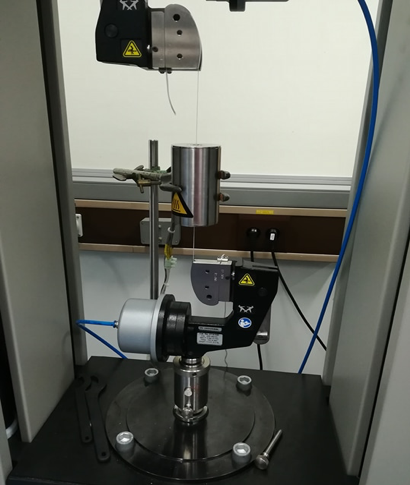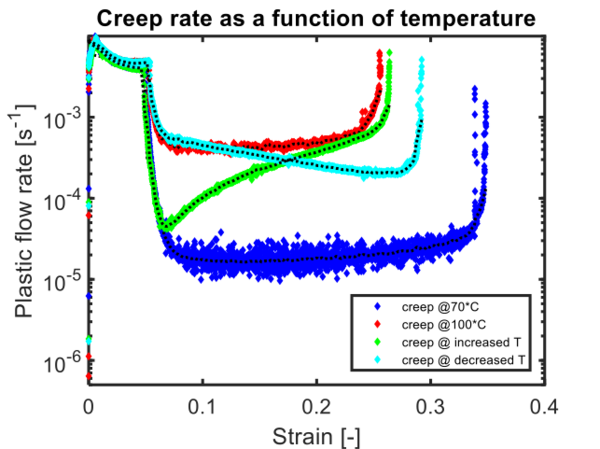
In the last few decades, the interest in polymers took another dimension, once the draw-ability of the polymers was discovered by DSM. The incredibly high orientation of the polymer chains led to ultra-strong polymeric fibres used in ballistics, offshore, lift and hoisting applications. Dyneema, one of the most known UHWMPE fibres, is also widely used in mooring applications due to its excellent strength-weight ratio, corrosion and UV resistance and damping properties. The drawback of UHMWPE’s is their strong stress and temperature dependency on mechanical properties and for long-term applications, the occurrence of creep which leads to certain plasticity-controlled failure. As for polymers the question is rather whenthe material will fail instead ofif the material will fail, the ability of predicting the lifetime based on applied loading conditions is of significant importance.

Lifetime prediction of Dyneema was thoroughly examined by performing static and dynamic creep experiments at constant temperature. This concluded that Dyneema fails right after the critical strain is reached and the time until this failure is dependent on the creep rate. Unfortunately, not a single study have examined the impact of temperature variation due to day/night or seasons differences, while the lifetime is highly temperature dependent.
This study investigates the effect of temperature variation on the lifetime of Dyneema by performing creep experiments and aims to describe the temperature effects accordingly in order to predict the time to failure of the Dyneema fibre. From the results below, it can concluded that also critical strain is temperature dependent.
Type of research: Experimental
Contact
-
Teun Spruitkand. Catharina van der HorstSaidhof7906NK Genderen
-
Elena MangalFiene van Kuijc van MalsenLelijveldsteeg4382JC Ouwster-Nijega
-
Imke van der Veldening. Joost MartelVerschutpad3704MK Rotterdam-Albrandswaard